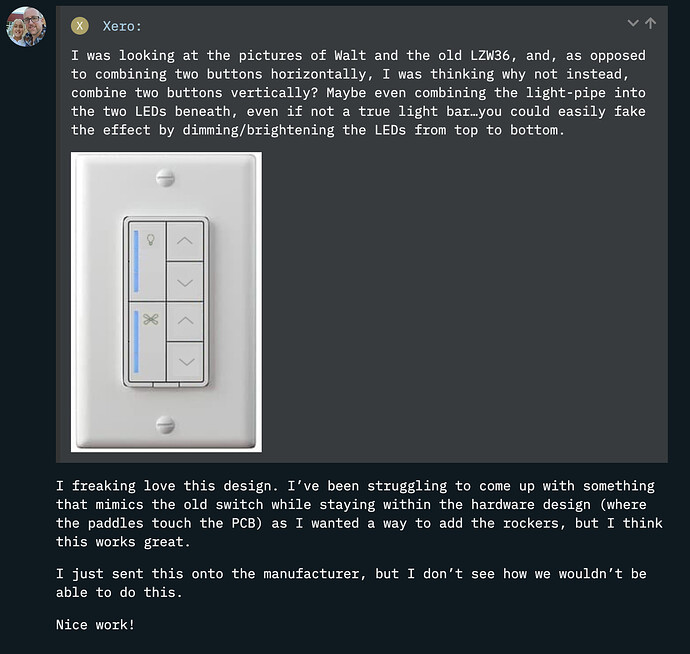Project Update: No update to the timeline
I sent on the suggestion for the Fan/Light design today so we’ll see how that plays out. Shoutout to @Xero for the design, looks awesome!
Referenced here: Zigbee Fan Canopy Module | Project Cheryl - #168 by Eric_Inovelli
